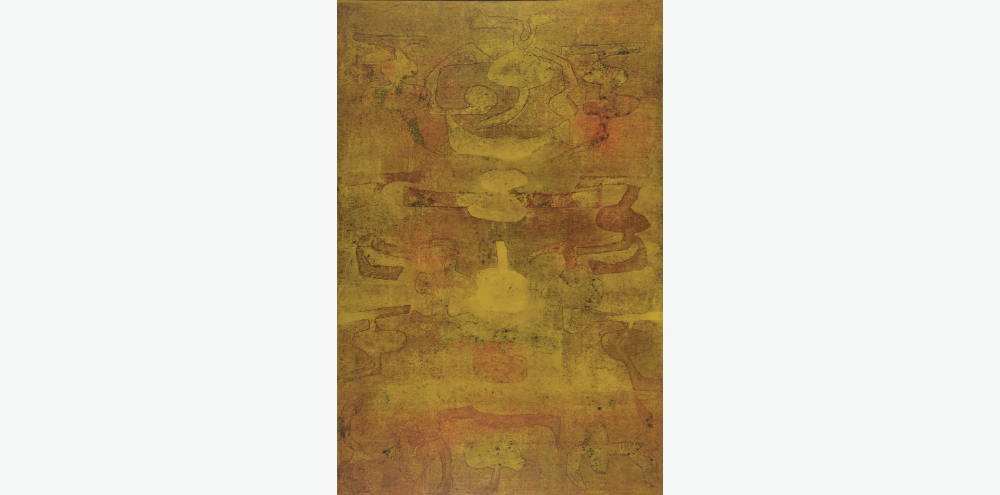Introducing Abstraction: Gaitonde
Following India’s long and uninterrupted history of figuration, artists began to explore abstraction in the 1950s, referring to artworks that intentionally do not reflect reality, but instead use line, colour, and gesture to convey ideas and feelings. Artists who looked to abstraction were connected to various groups and movements and engaged with different formal and aesthetic concerns; much of the time they also continued to explore the figure or other representational modes alongside abstraction. In Europe and America, abstraction was focal in the development of modernism beginning in the 1910s, and in many ways represents its teleology until the 1970s. In India, both the context and timeline for abstraction were quite different.
Moving away from the idea of a lone artist toiling on an abstract, indecipherable composition in intellectual and physical isolation – as commonly part of the mythology of artists like Nasreen Mohamedi (and as seen even in Souza’s self-portrait earlier in this lesson), our study of this topic will begin to show the extent to which abstraction was part of broader and connected developments in modernist art from India. This was in spite of the fact that to some critics and audiences, abstraction was considered too “Western,” and too much a part of a foreign art history, to flourish in India. Let us first briefly look at the two examples that show the range of what abstraction in India could mean.
V.S. Gaitonde
V.S. Gaitonde is remembered as India’s pioneering abstract artist – even as he preferred the term “non-objective” for his paintings. Beginning in the 1950s, Gaitonde began to move away from representational work towards formal purity of line and color in his canvases as he became engaged with Zen Buddhism. Some of Gaitonde’s “non-objective” paintings evoke the feeling of a landscape, and they have been written about that way. One can certainly read central planes as horizon lines that seem to separate sky from sea and circular forms as the sun or another element of the solstice. But, as tempting as it can be to read his works in relation to elements of the natural world, Gaitonde sought a vision that was quite connected to the aspirations of abstraction in early 20th century Europe, in which artists sought autonomy and a certain spiritual balance through the abstractions of their canvases.
Tyeb Mehta
But unlike in the West, abstraction in India was not always “absolute” and artists who were clear about their commitments to the figure and to modernist expression invented new ways of incorporating elements or principles of abstraction into their work. For instance, we can turn to an important series of Diagonals by Tyeb Mehta, who was peripherally connected to the Progressive Artists Group and a figural artist, to see how this may work. Mehta’s Diagonal canvases integrate his lifelong exploration of the fractured figure, particularly related to violence following Partition, with the abstracted geometric form of the diagonal. The diagonal is a device that he invented but – as the artist pointed out – it emerged from the transformative experience of seeing Barnett Newman’s Onement I at MoMA while he was in New York on a Rockefeller Fellowship. The artist was very clear about his intent in integrating the abstract form of the diagonal and the figure, stating: “In front of a painting by Barnett Newman, I finally understood that I could preserve the sheerness and radiance of large areas of colour without sacrificing the figure. I came back to India and went on trying it for weeks until one day, I gave up and threw black colour to destroy the canvas. Instead, it all fell into place. The diagonal was the solution. And my painting was never the same again.”
Conclusion
- Despite criticisms of abstraction being considered too “Western,” abstraction was an integral part of the trajectory of Indian modernism
- In the South Asian context, it was linked to specific historical moments and socio-cultural practices (dismantles the perceptions/myths of elusive meaning and imagery)









